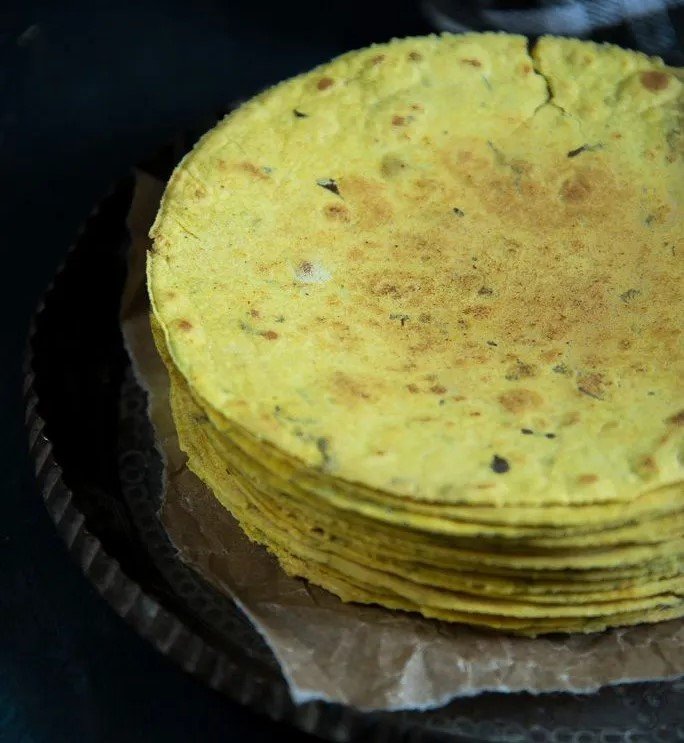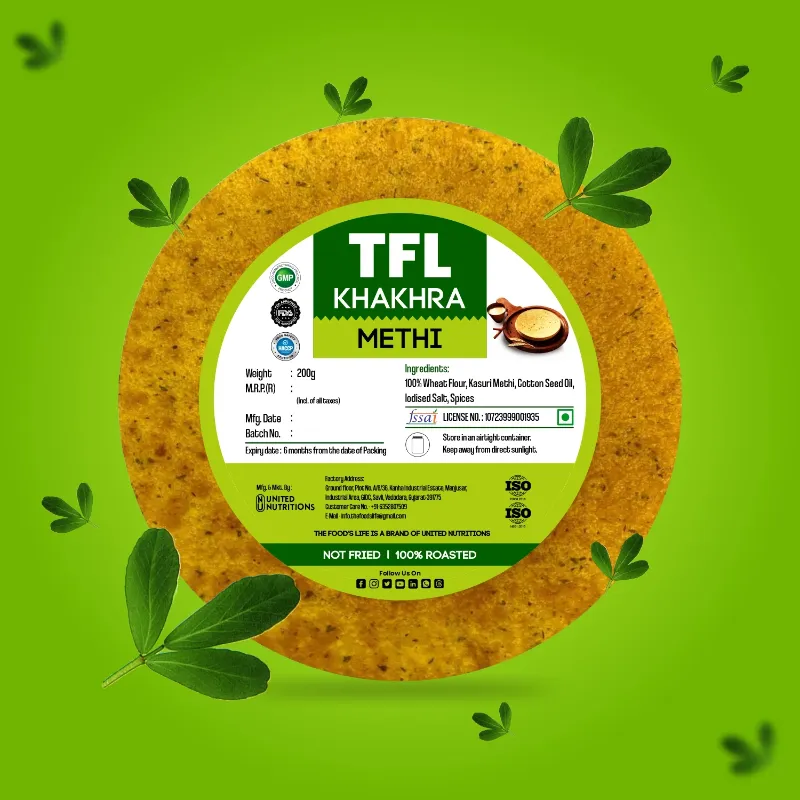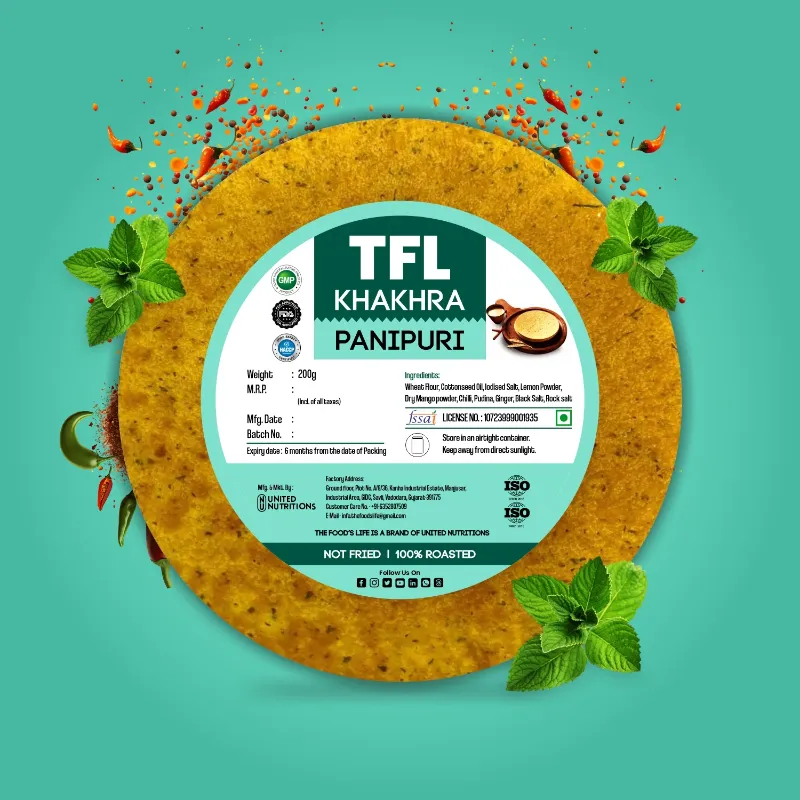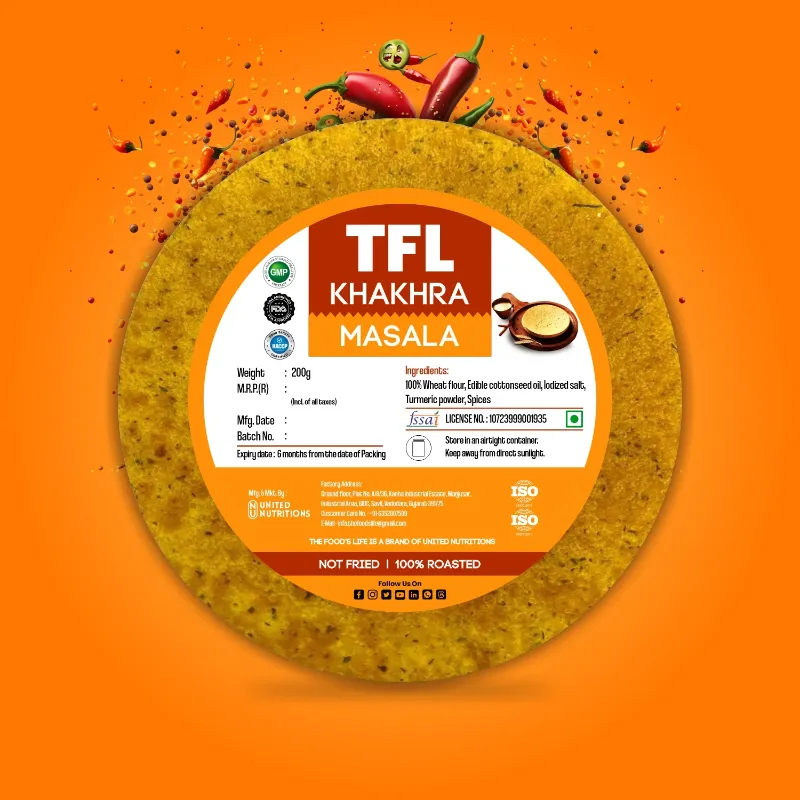Khakhra is a popular Gujarati snack, renowned for its crunchy taste and appetizing flavors. It has been part of Gujarati cuisine for generations, as a nutritious but delicious side dish with tea or a snack on its own. Authentic Gujarati khakhra is made possible with a mix of traditional techniques and some ingredients that provide the flavor and texture with an added twist.
The Essence of Gujarati Khakhra
From the colorful state of Gujarat, khakhra is not only a snack but a symbol of the state's rich gastronomic history. Composed mainly of whole wheat flour, these roasted flatbreads are renowned for their versatility, which enables a host of flavors to cater to different tastes. Preparation of khakhra is very careful, making sure that each piece has the right amount of crispiness and flavor.
Traditional Ingredients
The key to an original Gujarati khakhra is in the ingredients. This is a rundown of the vital ingredients:
Whole Wheat Flour (Atta): The main base, giving it a robust and wholesome taste.
Oil or Ghee: Added to the dough to give richness and help to achieve the required crispiness.
Spices and Herbs: Typical additions are ajwain (carom seeds), cumin seeds, turmeric powder, red chili powder, and asafoetida (hing), each adding its own flavor.
Kasuri Methi (Dried Fenugreek Leaves): Used for the sake of a gentle bitter flavor and fragrant essence.
Salt: For the enhancement and balancing of flavors.
Not only do these ingredients characterize the flavor but also make the khakhra a healthy snack in itself, filled with fiber and essential nutrients.
Preparation Methods
Preparing real Gujarati khakhra is an art which involves skill, patience, and dedication. The conventional process has some key steps:
Preparation of Dough: Combine whole wheat flour with herbs, spices, salt, and a little oil or ghee. Add water gradually to prepare a soft and pliable dough. Knead well to mix all ingredients properly.
Resting the Dough: Rest the dough for around 15-20 minutes. Resting aids in gluten formation, which makes the dough easier to roll out and provides a better texture.
Rolling: Cut the dough into small equal-sized balls. Roll each ball into a very thin disc using a rolling pin, just like a chapati. The thinner the disc, the crisper the khakhra. Use dry flour to dust as and when necessary so that they don't stick together.
Roasting: Roast a thick tava or griddle on low heat. Spread the dough rolled out to the size of the tava and roast lightly. Keep pressing the surface constantly with a wooden press or folded cloth to check puffing and even roasting. Turn and repeat the same until both sides are golden brown and crispy. Cooking on low heat is very important to get the desired texture without burning.
Cooling and Storage: After roasting, let the khakhra cool down fully. Cooling does help achieve the maximum crispiness. Store them in an air-tight container to keep them fresh and crunchy.
The careful pressing while roasting is a unique feature of preparing khakhra so that every piece remains flat and consistently cooked.
Variations of Gujarati Khakhra
Although the plain khakhra is a traditional one, Gujarati food has an array of variations to its liking, each providing a distinct taste sensation:
Methi Khakhra: Adds kasuri methi to the dough, which provides an aromatic flavor and a slightly bitter flavor that goes well with spices.
Masala Khakhra: A more pungent variation where the dough is mixed with a mixture of spices such as red chili powder, turmeric, and garam masala, providing a strong flavor experience.
Jeera (Cumin) Khakhra: Spiked with cumin seeds, lending a warm earthy flavor that is plain but pleasing.
Garlic Khakhra: A treat for garlic lovers, with minced garlic mixed into the dough, lending an intense and rich note.
Ajwain Khakhra: Carom seeds are used to impart a special flavor and aid digestion.
These variations not only accommodate different taste preferences but also reflect the versatility of khakhra in accepting various flavors while retaining its original character.
Nutritional Benefits
Genuine Gujarati khakhra is not only a culinary delight for the palate but also benefits several ways from a health perspective:
Low in Calories: As khakhra is roasted and not fried, it is a low-calorie food item, which makes it appropriate for those who are concerned about their calorie intake.
High in Fiber: The incorporation of whole wheat flour guarantees a high fiber content, which helps in digestion and gives a sense of fullness.
Rich in Protein: Whole wheat contains a reasonable amount of protein, which is required for muscle repair and general body functions.
Inclusion of Healthy Spices: Spices such as ajwain and cumin not only add flavor but also provide digestive benefits and other health-enhancing properties.
Adding khakhra to your meal plan can be a tasty approach to consuming a snack that meets health and wellness objectives.
Serving Suggestions
With Pickles: A classic combination, pickles' acidity balances khakhra's muted flavors.
Yogurt or Chutneys: Serving khakhra with yogurt or with different chutneys adds wetness and opens up the taste experience.
Tea or Coffee: A favorite side dish at breakfast or tea-time, providing a nice crunch to accompany your drink.
Spreads: Contemporary variations include having khakhra with cheese spreads, hummus, or even guacamole.






